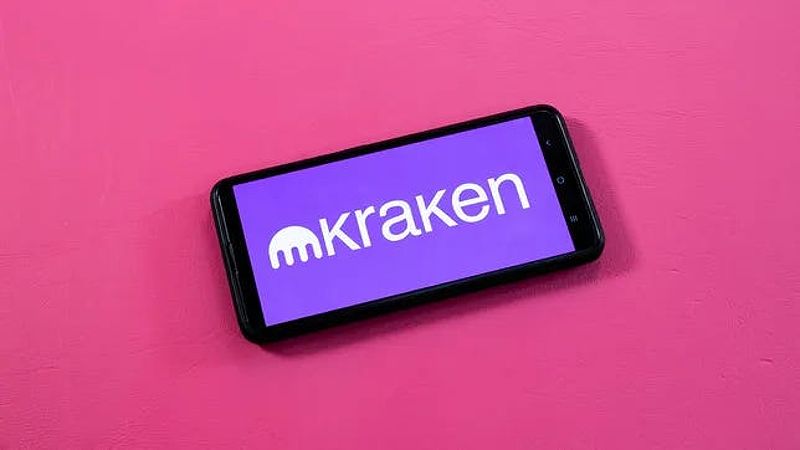As the global cryptocurrency market continues to soar, reaching a staggering valuation of over $2 trillion as of June 2024, the allure of best crypto trading for beginners has never been more compelling. Whether you’re looking to diversify your investment portfolio or simply intrigued by the potential of digital assets, understanding the intricacies of this dynamic market is essential.
In this comprehensive guide, I’ll share my personal experiences and insights to help you navigate the world of cryptocurrency trading as a beginner. From mastering the fundamentals to choosing the right exchange and executing your first trades, I’ll equip you with the knowledge and tools to embark on your crypto trading journey with confidence.
Introduction
My introduction to cryptocurrency trading began with a deep fascination for the underlying technology and the decentralized nature of the market. Unlike traditional financial markets, the crypto sphere operates 24/7 and is largely independent of the political and economic factors that influence conventional investments.
At its core, cryptocurrency trading involves the buying and selling of digital assets, such as Bitcoin, Ethereum, and a vast array of altcoins, with the goal of profiting from the market’s price fluctuations. The key factors that drive these price movements include supply and demand dynamics, regulatory changes, media coverage, and the overall sentiment of the crypto community.
As someone new to this space, I quickly learned that the cryptocurrency market is known for its wild swings, which can offer lucrative opportunities for traders who can correctly predict the direction of the market. However, this volatility also comes with increased risk, and it’s crucial to develop a solid understanding of risk management strategies.
Understanding the Basics of Best Crypto Trading for Beginners
Choosing the Right Cryptocurrency Exchange for Beginners
 Kraken
Kraken
One of the most critical decisions I made as a beginner crypto trader was selecting the right exchange to start my journey. After extensive research and a deep dive into the available options, I ultimately settled on Coinbase, a platform renowned for its user-friendly interface and comprehensive educational resources.
Coinbase’s intuitive design and user-friendly features made it an ideal choice for someone like me, who was just starting to navigate the complexities of best crypto trading for beginners. The platform’s step-by-step onboarding process and informative tutorials helped me feel confident and informed as I took my first steps into the crypto markets.
While Coinbase may be one of the more well-known exchanges, there are several other platforms that cater specifically to beginners, such as Crypto.com and bitFlyer. These exchanges often prioritize simplicity, providing easy-to-use interfaces and tailored support to help newcomers feel comfortable and confident in their trading activities.
When evaluating the right exchange for your needs, I recommend considering factors such as security features, trading fees, the number of supported cryptocurrencies, and the availability of educational resources. It’s also a good idea to open a demo account and practice trading with virtual funds before committing your hard-earned money.
Getting Started with Cryptocurrency Trading
 Gemini
Gemini
With my exchange of choice selected, I was ready to take the plunge and make my first crypto trade. The process began with creating an account and verifying my identity, which involved providing personal information and completing the necessary identity verification procedures.
Once my account was set up, I needed to fund my trading activities. This involved linking a bank account or debit/credit card to my exchange, which allowed me to make deposits and start buying cryptocurrency. I quickly learned that this process could sometimes be subject to fees, so I made sure to familiarize myself with the exchange’s pricing structure before making any transactions.
When it came time to place my first trade, I opted for a limit order, which allowed me to set a specific price at which I was willing to buy or sell a particular cryptocurrency. This approach helped me maintain a greater degree of control over my trades, minimizing the impact of market volatility on my investment.
As a beginner, I found it valuable to start with small trade sizes and gradually increase my exposure as I became more comfortable with the trading process. This allowed me to learn from my experiences, refine my strategies, and develop a better understanding of the market dynamics without risking significant financial losses.
Managing Your Cryptocurrency Portfolio and Risk
 Crypto.com
Crypto.com
One of the key lessons I learned early on in my crypto trading journey was the importance of effective risk management. I quickly realized that the highly volatile nature of the cryptocurrency market required a disciplined and thoughtful approach to portfolio management.
Diversification became a critical component of my trading strategy. By investing in a range of different cryptocurrencies, I was able to mitigate the impact of market fluctuations and reduce my overall risk exposure. Additionally, the use of stop-loss orders helped me set predetermined limits on my potential losses, providing a safety net in the event of unexpected price movements.
Securing my cryptocurrency holdings was another area of focus. I opted to use a combination of exchange-based wallets and a hardware wallet, the latter of which offered an extra layer of protection by storing my private keys offline, making them less vulnerable to hacking attempts.
Throughout my trading journey, I also made a conscious effort to remain objective and level-headed, even in the face of market volatility. I found that by developing a disciplined trading plan and sticking to it, I was able to make more informed decisions and avoid the emotional pitfalls that can often lead to poor outcomes.
Additional Resources and Learning Opportunities
 BitFlyer
BitFlyer
As I delved deeper into the world of best crypto trading for beginners, I discovered a wealth of resources that have been instrumental in expanding my knowledge and refining my skills. Platforms like Coindesk, CoinTelegraph, and The Motley Fool have provided me with a steady stream of educational content and market analysis, helping me stay informed about the latest developments in the crypto industry.
Additionally, I’ve found great value in participating in online communities, such as Reddit’s r/CryptoCurrency and r/BitcoinBeginners. These forums have connected me with experienced traders who have offered invaluable insights and guidance, further solidifying my understanding of the crypto trading landscape.
Staying up-to-date with reputable news sources, such as Bloomberg, CNBC, and The Wall Street Journal, has also been crucial in keeping me informed about the broader trends and regulatory changes that can impact the cryptocurrency market.
FAQ
Is cryptocurrency trading safe?
While cryptocurrency trading does carry inherent risks due to the market’s volatility, reputable exchanges have implemented robust security measures, such as cold storage for digital assets and multi-factor authentication, to help mitigate these risks. As with any investment, it’s essential to thoroughly research the exchange, understand the risks, and practice sound risk management strategies.
How do I choose the right cryptocurrency to trade?
When selecting cryptocurrencies to trade, I recommend considering factors like market capitalization, real-world use cases, and the strength of the project’s development team. Diversifying your portfolio across different cryptocurrencies can also help manage your overall risk.
What are the fees associated with cryptocurrency trading?
Cryptocurrency trading can involve various fees, including trading fees, deposit fees, and withdrawal fees. These fees can vary significantly across different exchanges, so it’s crucial to research and compare the fee structures before choosing an exchange.
How do I store my cryptocurrency safely?
The safest way to store your cryptocurrency is in a hardware wallet, which is a physical device that stores your private keys offline, making them less vulnerable to hacking attempts. Alternatively, you can use a software wallet or a reputable exchange-based wallet, but be sure to enable two-factor authentication and regularly check the security of your holdings.
Conclusion
As I reflect on my journey into the world of best crypto trading for beginners, I’m struck by the incredible growth and potential of the cryptocurrency market. From the initial fascination with the underlying technology to the thrill of executing my first successful trades, this experience has been both challenging and rewarding.
By understanding the basics of cryptocurrency trading, choosing the right exchange, and developing a disciplined approach to risk management, I’ve been able to navigate the crypto landscape with confidence and a keen eye for emerging opportunities. While the market may remain volatile, I’m excited to continue exploring this dynamic field and sharing my insights with others who are just starting their crypto trading journey.
Whether you’re looking to diversify your investment portfolio or simply exploring the possibilities of digital assets, I encourage you to take the first step and dive into the world of best crypto trading for beginners. With the right knowledge, tools, and a willingness to learn, you too can unlock the thrilling potential of the cryptocurrency market.

